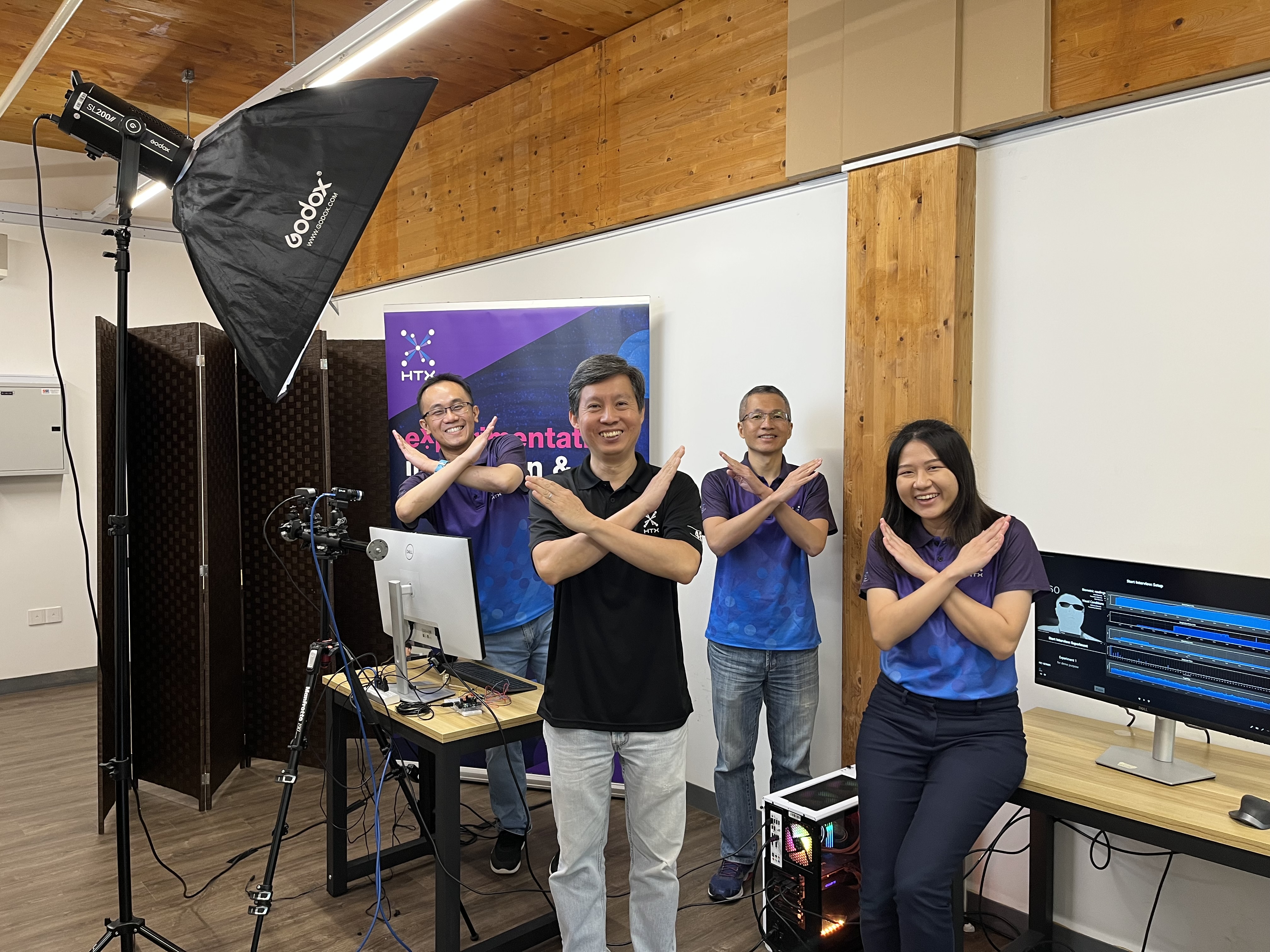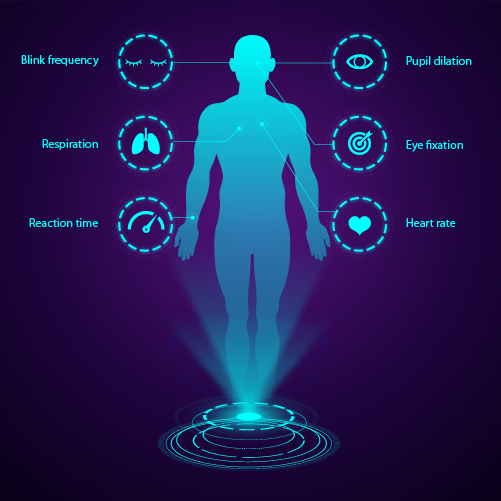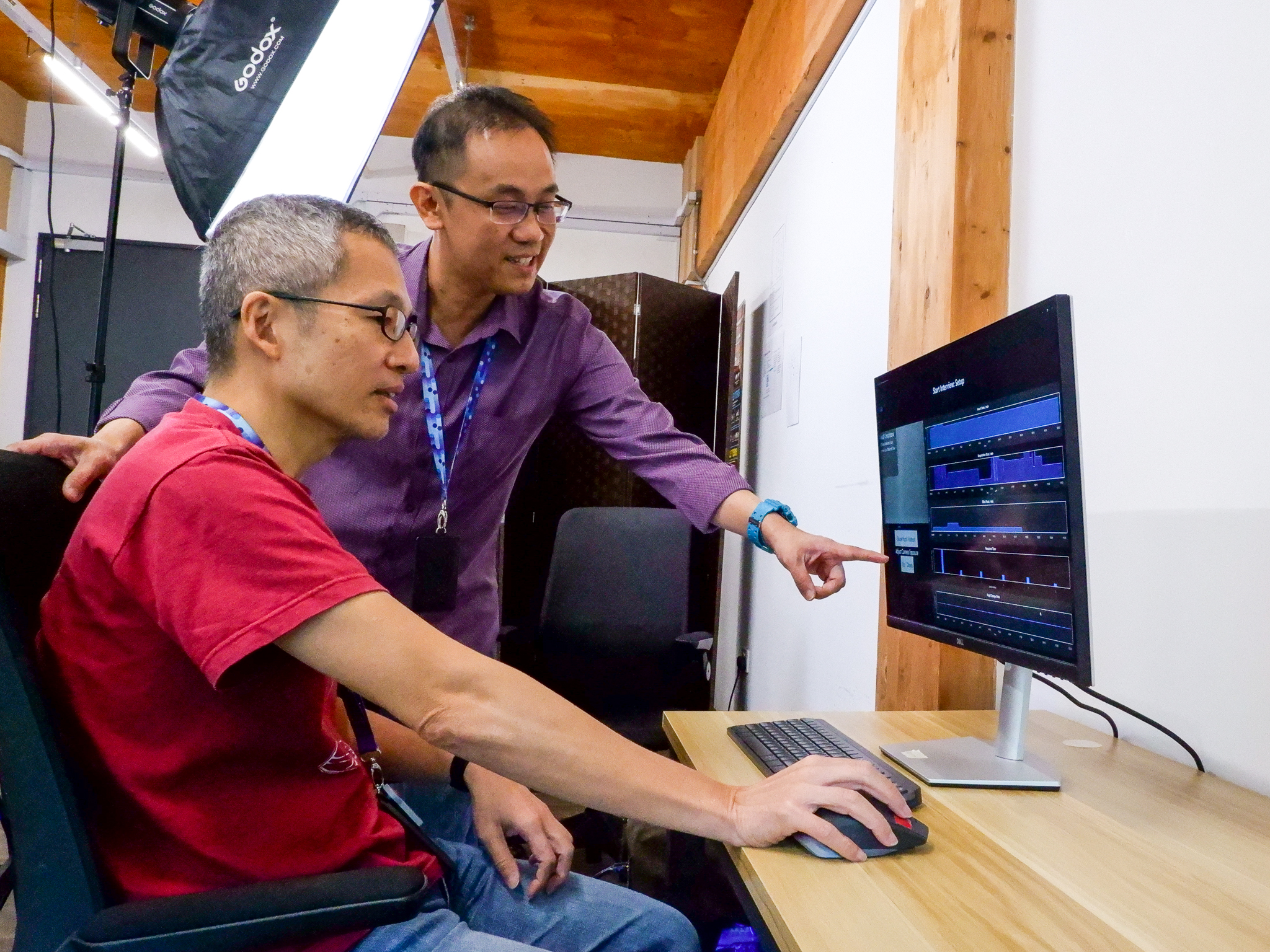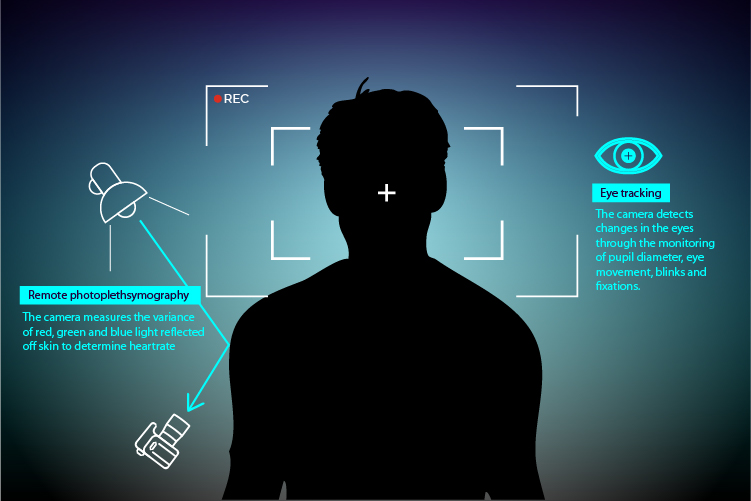
As the throngs of people pass through Singapore’s airport and checkpoints each day, Home Team officers are on the prowl for possible smugglers, traffickers, and others with malicious intent. In addition to tracking down threats, they also conduct interviews to identify criminals, gather intelligence, and screen potential lawbreakers.
But is it possible to tell a suspicious person from an innocent person just by looking at them? And can you truly determine if someone is telling the truth or lying with a few questions?
The team at HTX’s Biometrics & Profiling (B&P) Centre of Expertise (CoE) believes the answer is yes.
“Experienced Home Team officers can sniff out suspicious behaviours,” Deputy Director (Profiling), Kee Ein Cern affirmed. “But it still depends on their personal experiences and judgements – at HTX, we want to detect
deception scientifically and objectively, and use technology to scale up Home Team’s operations.”
The Search for Tell-Tale Indicators of Trouble

HTX's B&P team is studying how physiological cues can be used to accurately distinguish truthtellers from deceivers (Graphic: HTX/ Li Xin Hui)
The first step is to know what behaviour to look out for. As such, a key part of the B&P team’s work is to design experiments that identify signs, called Tell-Tale Indicators (TTIs), of one’s deception.
“There is some truth to the adage that the eyes are the windows to the soul,” Ein Cern said of one of the team's recent experiments conducted at the HTX Credibility Assessment Lab. “We found that the pupils of a person who
tries to lie tend to enlarge.”
In this experiment, the B&P team divided participants into two groups, one who was guilty of smuggling contraband items and one who was innocent. Participants had to answer questions about the mock crime, and the “smugglers” were given an incentive not to get caught.
During the interviews, a variety of sensors were used to record the physiological responses of the participants. Pupil dilation and an irregular heartbeat stood out when participants told lies.
Research is ongoing to examine other possible tell-tale indicators such as eye blink rate, breathing pattern and more. Additional experiments, such as to explore the indicators associated with drug trafficking behaviour are also in the works.
Removing the Taint of Human Biasness
Researching on tell-tale indicators will allow the B&P team to calibrate existing technology to scan for such behaviour on behalf of Home Team officers, Ein Cern said.
The benefits of this are two-fold: First, it is more accurate. Technology can detect subtle physiological reactions, like a change in heart rate, breathing pattern, or body temperature, that are not visible to the naked eye.
Second, it allows Home Team officers to analyse a greater number of indicators at once, reducing the risk of a suspect slipping through the gaps.
“I do not think anyone can suppress the full range of tell-tale indicators, from heart rate to sweating behaviour, unless they are a robot. There are bound to be leakages, and technology will be able to detect them,” Ein Cern pointed out.
Bridging the Gap Between Research and Operations

Deputy Director, Profiling Kee Ein Cern (standing) and Head (Prototyping and Integration), Profiling Wong Sum Thai (seated) at the HTX Credibility Assessment Lab (Photo: HTX/ Jasline Tan)
No doubt, translating research from the sterile laboratory into the complex and diverse Home Team operating environments is easier said than done.
This is why Ein Cern reiterated that the B&P team cannot “just sit in the ivory tower and conduct research”, but must stay close to the end users and actively source for new technology suitable for field work.
For example, noting that the existing lie detector technology requires more time and effort to set up and operate, the B&P team is investigating other methods like remote photoplethysmography and eye-tracking technology. Both are contactless
and non-invasive in operation. While the former relies on high-definition video technology, to measure the heart rate, the latter detects changes in the eyes through the monitoring of pupil diameter, eye movement, blinks and fixations.
To date, these efforts have led them to find a visual stress analysis tool, that uses a camera to detect facial colour changes caused by fluctuations in heart rate and blood flow, as well as an eye behaviour analysis tool, that uses an eye-tracker
device to measure changes and movements in the eyes relating to cognitive functions.
Compared to the two or three hours a polygraph takes, an assessment with these tools takes only 10 to 15 minutes, and the results are 88-90% comparable to a physically-attached sensor.

HTX's B&P team is studying next-generation lie detectors that are less intrusive, such as remote photoplethysmography and eye-tracking. (Graphic: HTX/ Li Xin Hui)
Force Multiplying Home Team Operations
With technology like this in the pipeline, the future may soon see a situation where a person with malicious intent can simply be walking through immigration, when their erratic behaviour is picked up by cameras, and Home Team officers intervene.
“This is what excites me most – the possibility of seeing our work being implemented on the ground and benefiting everyday users,” Wong Sum Thai, Head (Prototyping and Integration), Profiling, at B&P CoE said.
Profiling technologies are still in the nascent stage, but as Ein Cern so aptly puts it: “At HTX, we are definitely taking steps in the right direction to reap the benefits from these new capabilities.”
This project won the 2024 Home Team InnovA Project Commendation award.

